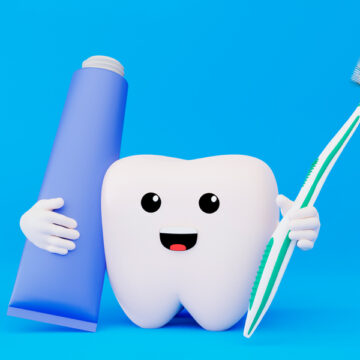Safe and Effective Dental Imaging for Kids
Low Radiation Dental X-Rays for Children
Our Morgan Hill dental office is equipped with digital X-rays, ensuring the safest and most effective imaging for your child. Digital X-rays use significantly lower radiation than traditional methods, making them safer for young patients. These X-rays allow our dental team to quickly and accurately diagnose potential issues, ensuring prompt and appropriate treatment. If you’re searching for digital x-rays near me, you can trust that our technology meets the highest safety standards.
Optimal Frequency for Pediatric Dental X-Rays
Due to the progress of developing teeth and jaws, children typically need dental X-rays more often than adults. Regular X-rays help our dentists spot tooth decay early, monitor the growth of new teeth, and plan necessary orthodontic treatments. We recommend X-rays based on your child’s needs, but kids may generally need them every six months to a year. This frequency helps ensure any potential issues are caught and addressed promptly.
Different Types of Dental X-Rays for Kids
The type of x-ray used depends on what the dentist needs to examine. Bitewing X-rays, which help see between the teeth, are common for detecting cavities. Panoramic X-rays provide a comprehensive mouth view, including emerging teeth and jaw structure. Occlusal X-rays focus on the floor of the mouth to show the bite and teeth development. Periapical X-rays execute the entire tooth, from the top (crown) to the bottom(root), helping diagnose issues below the gum line. Orthodontic X-rays help in planning braces or other orthodontic treatments.
Importance and Benefits of Early Detection Through Dental X-Rays
Early detection through dental X-rays is crucial for maintaining your child’s oral health. X-rays can reveal cavities between teeth, the alignment of new teeth, extra or missing teeth, and potential bone diseases. They also help monitor the health of your child’s teeth and mouth after an illness or injury. This early intervention can prevent minor issues from becoming major problems, saving your child from more invasive treatments in the future.
Preparing Your Child for Their First Dental X-Ray
To prepare your child for their first dental x-ray, explain the process in simple terms they can understand. For example, you might tell them that the dentist is taking special pictures of their teeth to keep them healthy. At our dental office, we make the experience as comfortable as possible by explaining each step and using child-friendly language. Our team is skilled at helping children feel at ease, turning what could be a scary experience into a positive one.
Interpreting Dental X-Ray Results: What Parents Should Know
After the x-rays are taken, the dentist will review the images and explain any findings. Digital X-rays allow both you and your child to see the results immediately. The dentist will point out any areas of concern, such as cavities or misaligned teeth, and discuss possible treatment options. Understanding these results helps you make informed decisions about your child’s dental care.
Regular dental X-rays near you are essential to preventive care, helping ensure that your child’s teeth and gums remain healthy as they grow. If you have questions about dental X-rays or need to schedule an appointment, contact Bay Area Kids Dentist in Morgan Hill, CA. Our team is here to provide the highest-quality care with the latest technology, making your child’s dental visits safe, effective, and comfortable.
Problems We Treat
- Emergency Tooth Extraction
- Severe Toothache
- Loose or Dislodged Tooth
- Bleeding Gums
- Knocked Out Tooth
- Infection or Swelling in the Mouth
- Jaw Pain
- Chipped or Cracked Tooth
FAQs
Start brushing as soon as the very first tooth appears, usually around 6 months. Utilize a soft-bristled toothbrush and a tiny smear of fluoride toothpaste.
Help your child brush their teeth twice a day with fluoride toothpaste, limit sugary snacks and drinks, and visit the dentist periodically for cleanings and check-ups.
Watch for signs such as tooth pain, sensitivity to very hot or cold temperatures, visible holes, or dark spots. Regular dental visits help catch cavities early.
Untreated cavities may lead to pain, infection, and may affect how adult teeth come in. It’s important to treat them, even in baby teeth.
It could be a cavity, tooth injury, gum infection, or something stuck between the teeth. A dental checkup can find the cause.
Sudden pain may be caused by a cavity, a cracked tooth, an abscess, or even sinus pressure. It’s best to have a dentist examine it.
Most babies get their first tooth between 6 to 10 months, starting with the lower front teeth.
Bleeding gums can be caused due to brushing too hard, plaque buildup, or the early stages of gum disease. Ensure your child brushes their teeth gently and regularly.
Persistent bad breath can indicate poor brushing, cavities, gum issues, dry mouth, or even allergies. A dental checkup can help find the reason.
Thumb-sucking is normal in babies, but it can affect tooth alignment if it continues past age 4. Consult your dentist if you are concerned.
If it’s a baby tooth, don’t try to put it back—call us for advice. If it’s a permanent tooth, gently rinse it and try to place it back in the socket or in milk, and come to the dentist right away.
Nighttime grinding (bruxism) is common in kids and can be caused due to stress, misaligned teeth, or sleep issues. We can evaluate if treatment is needed.
Sugary snacks, sticky candies, soda, and even dried fruits can lead to cavities. Encourage water, fruits, and crunchy veggies instead.
Not always, but it can be an early sign of gum disease or poor oral hygiene. Regular brushing and checkups help keep gums healthy.
Many kids start orthodontic evaluation around age 7. Early checks help plan for braces if needed.
Yes, but only for kids over age 6 who can spit it out. Choose child-friendly mouthwashes with fluoride.


















